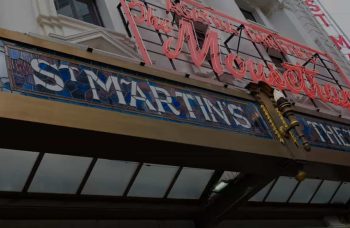Sometimes it’s easy to forget how much history is buried beneath our feet. Fossils and natural gases tell us of the early stages of life on Earth, and indigenous artifacts paint a picture of the first people to care for our lands. But there are much more recent endeavours of human creation closer to the surface than we are aware of. Cobblestones streets, carriage wheels, and crumbled foundations have been buried and paved over with time. So a collection of timbres alone may not have been a surprising discovery – but these timbres belonged to The Red Lion Theatre.
The Red Lion Theatre is generally asserted to have been the first dedicated playhouse in London (well, just outside it). It was constructed in 1567, in the midst of the Tudor period, and during a time where the majority of theatrical companies were travelling ones who sought to perform in taverns and inns across England. The Red Lion Theatre was commissioned by John Brayne, transforming a farm into a fully equipped stage with a fly tower. However, it was to be a short time in utilization, due largely to the theatre’s out-of-the-way location, and the Red Lion Theatre ceased operation in 1568. It wasn’t completely abandoned though, as it served as the receiving area for touring companies for Brayne’s next venture, The Theatre, which lasted for two decades and can be considered the first permanent playhouse.
Until now, the only real documentation to understand the Red Lion Theatre were the notes of multiple lawsuits between Brayne and both his carpenters as well as his brother-in-law. Through these, there was evidence of the intended build of the Red Lion Theatre, despite no physical trace remaining. But as excavations began in January 2019 in advance of a building project in Whitechapel, the timbres of a structure were slowly unearthed and were revealed this past week to have been those of London’s lost first theatre.

The excavation was carried out by Archaeology Southeast, the archaeology unit of University College London. The group and the director of this excavation, Stephen White, reminds us that they are still in the analyzing stages and that it cannot yet be undoubtedly confirmed if this is the site of the Red Lion Theatre. But he also seems confident that the evidence revealed so far does point to that conclusion. The structures that have been so far uncovered and discussed publicly are thought to be cellars, as well as numerous artifacts of drinking materials, both supporting this to be the playhouse as it would have served alcohol regularly through its lifespan. As the case unfolds, a 3D-model of what has so far been discovered can be viewed on Archaeology Southeast’s Sketchfab profile.
The discovery of the Red Lion Theatre would be the uncovering of an important link in the chain of England’s history of theatre. This farm turned playhouse turned company housing marks the beginning of what became the extravagant tradition of constructing theatres. And while the plays performed at the Red Lion are all but vanished from history thanks to the Tudor period’s indifference to theatre, we know that this small playhouse is what lead Brayne to build The Theatre, a stage used by Shakespeare’s own company. And if it were not for The Theatre, there would be no Globe, whose materials were used to construct the legendary home of the bard’s work. And so it is not simply timbers and tankards being uncovered, but a keystone in the story of theatre.





